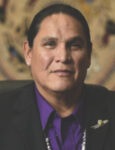
In this year, the 35th anniversary of the landmark Supreme Court ruling brought by the Cabazon Band in California, Tribal Government Gaming takes a look back to what really happened at that time.
When tribal gaming kicked off in the late 1980s and early ’90s, I had the honor to meet several pioneers in the field. Many had stories like the ones I heard from the Pascua Yaqui tribe near Tucson, Arizona. I sat down with several tribal elders and asked about their path to gaming, which at that time was culminating in the grand opening of the Casino del Sol. They told me about growing up in lean-tos with no electricity or running water. They explained how cold they were each winter, and how every summer they had to gather in the shade of the lean-tos to beat the heat. All year long, they struggled to find enough to eat to stay strong.
As a kid from Brooklyn, I thought I had a tough upbringing. But these people made me feel I lived in the lap of luxury.
I had heard many stories like this, so I completely understood the dedication these leaders had to tribal government gaming, and why tribal sovereignty was a keystone to that new industry. Even after tribes graduated to heated and cooled homesteads and had plenty to eat, their dedication to keeping their new business free from interference from other governments never waned.
And like my parents, who grew up during the Depression and protected everything they achieved after that with frugal wariness, tribal leaders of the early days of Indian gaming were always diligent when considering threats to their industry.
Now, for many of them, their tenure is up. Some, unfortunately, have died. Others have retired. New leadership has taken over, and for the most part, these new leaders understand the struggles their fathers and mothers endured to give them the opportunities available to them today.
Many of the leaders I met from those times talked about the seven generations. I came to understand this concept as the key difference between commercial and tribal gaming. In commercial gaming, stakeholders generally only worry about the quarterly reports and how the business is doing in that moment. In tribal gaming, leaders are looking seven generations into the future, considering how the actions and decisions of today may impact their progeny for decades to come.
When I think of people I met, such as Richard “Skip” Hayward of the Mashantucket Pequot, Richard Milanovich of Agua Caliente, Danny Tucker from Sycuan, several members of the Billie family from the Seminole Tribe, Philip Martin of the Mississippi Choctaws, Marge Anderson from the Mille Lacs Band, Stanley Crooks of the Shakopee Mdewakanton Sioux, Anthony Pico from the Viejas Band, Keller George of the Oneida Nation in New York, and the legacy they’ve left, it’s awe-inspiring. These are just a few of the amazing tribal leaders who laid the bedrock upon which tribal gaming is built.
What sets them apart is that they recognized they needed experts in the gaming field to get up to speed. Mickey Brown changed history for two tribes, the Mashantucket Pequot and the Senecas. Lyle Berman and Marlon Torguson elevated Minnesota tribes before they went commercial in Mississippi. And the Seminoles were lucky to snag Jim Allen, who built their gaming and hospitality business into the global powerhouse it is today.
The sons and daughters of these tribal gaming pioneers are now taking over—sometimes literally, as in the case of Reid Milanovich, recently elected to the same post his father held with the Agua Caliente Band in California. Many of this second generation of leaders are as dynamic and even more professional than their forebears. But they had the benefit of education, wisdom and now, hindsight. We’ve seen what works and what doesn’t work in many tribal situations.
So let’s remember the past, reflect on the opportunities of the present, and prepare for a bright future, because tribal gaming is just getting started.


















